Fall 2023 viewing, part four
Kino Lorber
I picked up a few Kino Lorber releases recently, some new, some used. I have yet to watch Jean-Pierre Melville’s Léon Morin, prêtre (1961), an upgrade from my nineteen-year-old BFI DVD, but did watch three others.
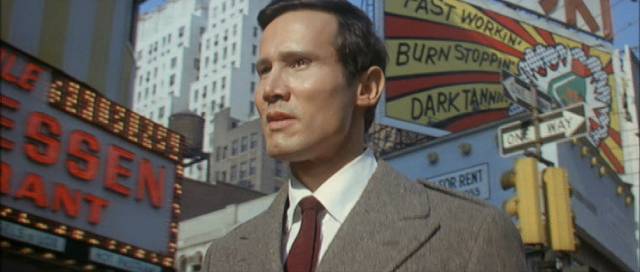
Assassination (Emilio P. Miraglia, 1967)
I have to admit that little of Assassination (1967) stuck with me because, apparently like everyone else who’s commented on-line about the movie, I couldn’t make much of the plot. Rooted in the Italian industry’s emulation of international spy movies inspired by James Bond and his imitators, this has shady characters working either for clandestine government agencies or sprawling criminal organizations involved in nefarious plots. But as confusing as it is, there are points of interest. First, it was the debut feature of Emilio P. Miraglia, who just a few years later would cap his short directing career with The Night Evelyn Came Out of the Grave (1971) and The Red Queen Kills Seven Times (1972). In addition, it was co-written by Luciano Ercoli, no slouch himself as a director of gialli, with The Forbidden Photos of a Lady Above Suspicion (1970), Death Walks on High Heels (1971) and Death Walks at Midnight (1972). The cinematography by Erico Menczer makes effective use of locations in New York and Munich as well as studio sets at Cinecitta, while Robbie Poitevin’s counter-intuitive lyrical jazz score adds to the mood. But most importantly, the movie hands Henry Silva a lead role which takes advantage of his distinctive screen presence; saved from execution by the CIA, he’s given plastic surgery and the identity of his brother in order to infiltrate an international criminal conspiracy with icy determination. Ida Galli aka Evelyn Stewart, a significant presence herself in Italian genre cinema throughout the ’60s and ’70s, plays the supposedly executed man’s wife. The Eurospy genre flourished for only a few years, but you can see a few flashes here of the gialli and poliziotteschi to come.
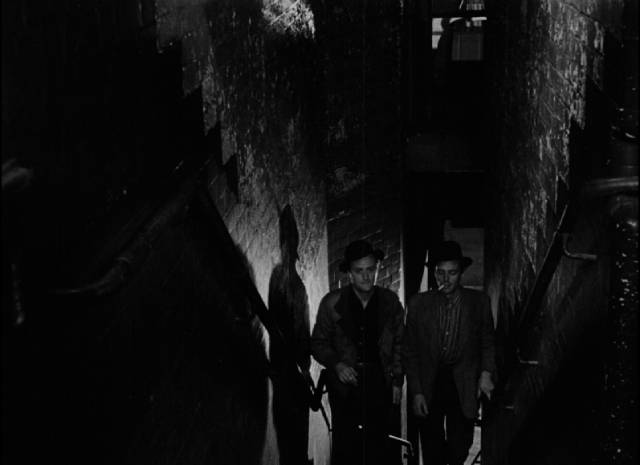
The Blue Lamp (Basil Dearden, 1950)
A very different view of law and order is presented in Basil Dearden’s The Blue Lamp (1950), one of a number of movies made by Dearden in the post-war decade (most produced by Ealing Studios) which reflected social issues through stories of crime. In this case, the focus is on the police dealing with the sense of nihilism among the young in the wake of the war and continuing austerity. The latter is embodied in petty criminal Tom Riley (Dirk Bogarde, still early in his career), who kills a policeman during a robbery; the former by PC George Dixon (Jack Warner), a friendly neighbourhood constable who proved so popular that, despite dying in the film, he was revived a few years later for the long-running Dixon of Dock Green television series which ran from 1955 to 1976 (and which was a regular part of my childhood TV viewing, reinforcing a comfortable image of the British police). If the film now seems questionable in his conservative attitudes, the script by Ealing regular (and ex-policeman) T.E.B. Clarke, Jan Read and Ted Willis (with additional dialogue by Alexander Mackendrick) is tightly constructed and full of nicely drawn character details, and Dearden brings a convincing documentary attitude to the material. Like many British movies of the period, The Blue Lamp seeks to come to terms with the instability of a society rethinking itself after a catastrophic upheaval which had stripped away many of the certainties which had previously propped up a class and power structure rife with inequalities.
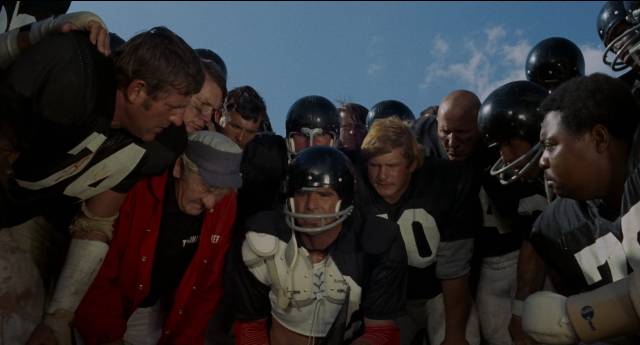
The Longest Yard (Robert Aldrich, 1974)
Robert Aldrich wielded cinema like a blunt instrument. When he was good, he made powerful, visceral dramas; when he was off, he could be crude and ugly. In the mid-’50s, he established his style with a string of iconoclastic movies – Apache and Vera Cruz (both 1954), the latter pointing ahead to the spaghetti western’s treatment of the mythology of the west; Kiss Me Deadly (1955), which transformed film noir and the hardboiled detective movie into an apocalyptic nightmare of Cold War paranoia and the looming threat of nuclear annihilation; and The Big Knife (1955) and Attack (1956), which respectively deconstructed the glamour of Hollywood and the idea of heroism in war.
In the ’60s, that iconoclasm somehow became allied to bigger-budgeted commercial projects, with mixed results. He launched the “hag horror” genre which transformed aging female stars into monsters with What Ever Happened to Baby Jane? (1962) and Hush … Hush, Sweet Charlotte (1964), tackled the abuse of female performers in Hollywood and on television in The Legend of Lylah Clare and The Killing of Sister George (1968), the latter being both ground-breaking and problematic as one of the first major movies to treat lesbianism openly. The Flight of the Phoenix (1965) was a further deconstruction of heroic adventure, while The Dirty Dozen (1967), probably his biggest hit, was perhaps his crudest and ugliest movie (at least until The Choirboys in 1977).
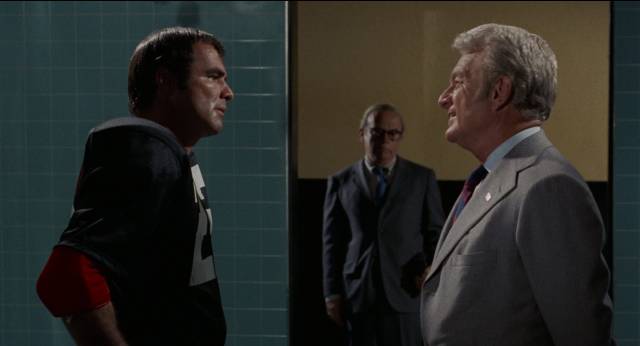
Even as the old studios gave way to looser forms of financing and a younger generation broke down old norms and courted a new, less conservative audience, Aldrich managed to maintain a fairly busy schedule, revisiting familiar genres – war (Too Late the Hero, 1970), noir (The Grissom Gang, 1971; Hustle, 1975), the western (Ulzana’s Raid, 1972), violent adventure (Emperor of the North, 1973), Cold War paranoia (Twilight’s Last Gleaming, 1977). Given the dominant qualities of many of his movies – masculinity, aggression, violence – it seems odd in retrospect that only once did Aldrich take on the sports movie, the genre which, along with the western and war movie, most clearly embodies those qualities. Less surprising, perhaps, is that this sports movie proved to be his second biggest box office success (after The Dirty Dozen), and also cemented the status of Burt Reynolds as a major star after fifteen years moving up the ranks on television and, since the late ’60s, in features.
The Longest Yard (1974), although a big money-maker, didn’t please a lot of critics and glancing back at some reviews from the time (the New York Times, for instance), the complaints reflect my feelings about The Dirty Dozen – crude, ugly, pandering to the audience’s baser instincts – but watching it again on Kino Lorber’s Blu-Ray (a 4K restoration in a dual-format package), I liked it more than I remember from when I saw it almost fifty years ago. The movie’s structure has been borrowed a number of times since (Paul W.S. Anderson’s Death Race [2008] springs to mind); a corrupt prison authority arranges for someone with particular skills to be sentenced to his prison so he can make use of those skills in a contest certain to be violent and, no doubt, rigged in the authority’s favour.
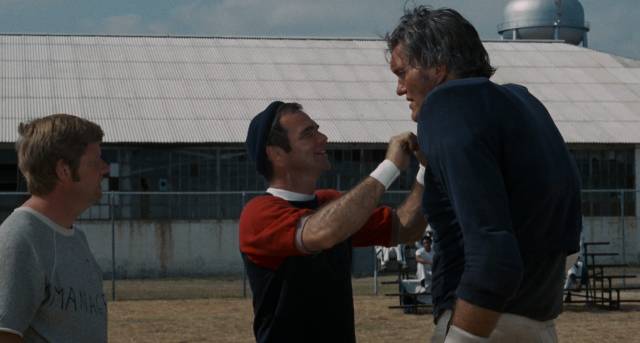
In this case, the convict is disgraced quarterback Paul “Wrecking” Crewe (Reynolds), whose career was ended when he threw a game for some gamblers. Not only is Crewe a flawed character – he’s an asshole. In the movie’s opening, he ditches his wealthy girlfriend, steals her expensive sports car, gets into a drunken chase with the cops and disrespects their authority when finally stopped. When he arrives at the state prison in Florida, he’s greeted by Warden Hazen (Eddie Albert at his slimy best), who’s a fan and has arranged for him to serve his time here so that he can coach a team of prisoners against whom the warden’s team of guards can practice for a big game. But Crewe isn’t interested until the guards make his life inside very unpleasant. When he finally agrees, it turns out the prisoners don’t trust him because of the earlier scandal – they think he’ll betray them to make the guards look good.
And so, in true sports movie fashion we get the double thread of Crewe’s personal redemption and the forging of a group of underdogs who will fight to win against seemingly impossible odds. The script, by Tracy Keenan Wynn and Albert S. Ruddy, manages to blend the familiar sports tropes with equally familiar prison movie tropes and gives the mix some comic energy tinged with occasional darker tones (there’s a particularly nasty murder which removes Crewe’s right-hand man during training). All of these elements are handled by Aldrich with seeming ease and assurance and at this distance I can now appreciate the old-school craft. Aldrich hits all the right notes, makes the rather obvious character turns, particularly during the second half which is devoted to the game itself, work in a satisfying way even as we know that the climactic moment of triumph isn’t going to last – after all, the winning team is still in prison and the losers still wield power over them.
*
Arrow
In addition to a couple of new Arrow releases, I watched some older disks – one given to me by a friend, one which has been sitting on the shelf for too long, and one I picked up at Entertainment Exchange when I traded in some disks I’d replaced.
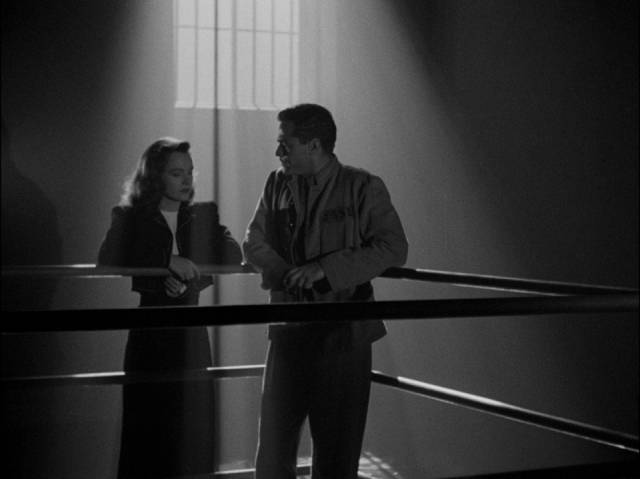
Phantom Lady (Robert Siodmak, 1944)
The latter is Robert Siodmak’s Phantom Lady (1944), a melodrama pointing towards the classic noirs he would direct later in the decade, which was made between a couple of program pictures for Universal (Son of Dracula [1943] and Cobra Woman [1944]), suggesting that it was a routine assignment handed to the contract director, who found some affinity with the material. Based on a Cornell Woolrich novel, the rather contrived story has businessman Scott Henderson (Alan Curtis), estranged from his wife, meeting a woman in a bar and spending the evening with her, downing a few drinks, going to a show. A number of people see them together, but after Scott gets home to find his wife dead, no one confirms his alibi. His secretary Carol (Ella Raines), who’s in love with him, sets out to find the mystery woman whose name Scott never knew, racing against time as he’s on death row awaiting execution. It soon becomes clear that everyone she talks to knows the truth but is covering up for some reason … that being that they’ve all been paid off. Her only hope is that she can find the unknown woman herself, but even that’s a problem because she turns out to be in a virtually catatonic state after the death of her fiance in the war. The final reveal of the real murderer’s identity is hardly a surprise since the top name in the cast seems to play a secondary character. Siodmak moves things along quickly and draws good performances from the cast – Elisha Cook Jr is a standout as a jazz drummer apparently hopped up on drugs, and Raines is an appealing heroine, though Curtis as the object of her affection is rather dull and unappealing, becoming more sullen as his case seems to be increasingly hopeless.
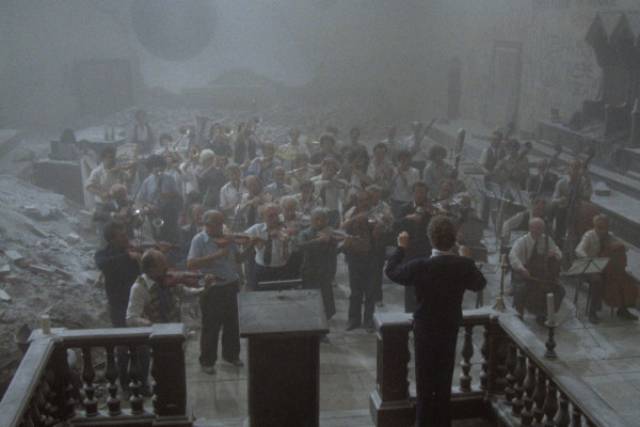
Orchestra Rehearsal (Federico Fellini, 1978)
A musician friend gave me his copy of Federico Fellini’s Orchestra Rehearsal (1978) because he was disappointed that it’s not really about music at all. Rather, it uses the conceit of a television documentary crew filming the titular rehearsal to examine the larger theme of how society is an ongoing project requiring disparate individuals to both contribute their particular talents to the group and subsume themselves to something larger than themselves. Fellini made this small project for television after a run of large, ambitious features – Fellini Satyricon (1969), Roma (1972), Amarcord (1973) – which culminated with the huge, dyspeptic and alienating Fellini’s Casanova (1976), and there’s almost a sense of relief in Orchestra Rehearsal’s playful approach to a political allegory.
The presence of the television cameras plays to the musicians’ egos, encouraging them to assert themselves at the expense of group cohesion. Meanwhile, there are representatives of the musicians’ union present who insist on adherence to contract stipulations having nothing to do with the music which is the ostensible reason for everyone coming together. There’s also conflict between the musicians and the increasingly dictatorial German conductor (calling up associations of Italy’s past subjugation under the Nazis). But these conflicts don’t unite the musicians, who even reject the idea of being tied to a particular piece of music. The rehearsal eventually collapses into chaos, suggesting the impossibility of people comic together for a common purpose … and yet, after the hall itself collapses around them in dust and rubble, they eventually begin to play the music in the midst of the ruins, the pendulum compelled to swing back from chaos towards order. Nothing is really resolved and society remains an ongoing project, fraught with tension between community and the individual.
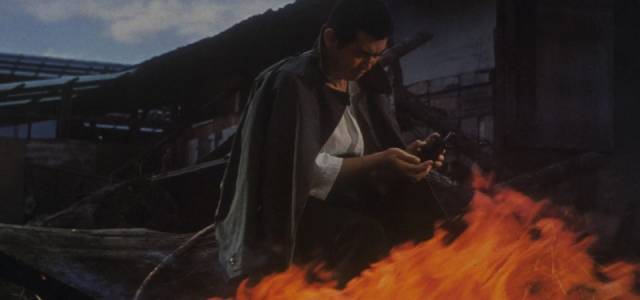
Graveyard of Honor (Kinji Fukasaku, 1975)
Kinji Fukasaku spent much of the ’70s chronicling post-war Japan’s rise from crushing defeat to capitalist powerhouse through the lens of organized crime and its ties with business and politics. The foundation of this project was the five-film Battles Without Honor and Humanity (1973-74), which was immediately followed by the three-film New Battles Without Honor and Humanity (1974-75), a hugely ambitious saga shot through with anger and an air of documentary authenticity. These eight movies were supplemented with a number of stand-alone titles from Japan Organized Crime Boss (1969) through Hokuriku Proxy War (1977), but perhaps none of these movies is more nihilistic than Graveyard of Honor (1975).
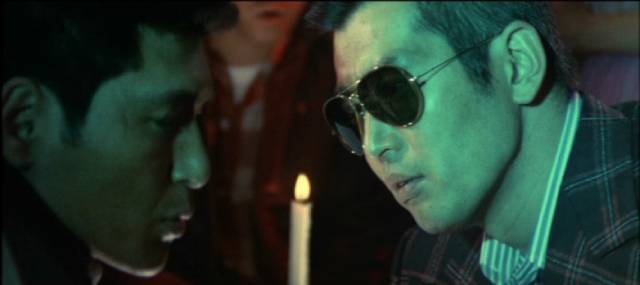
Based on a novel by Goro Fujita, which was in turn based on the life of an actual yakuza, the film is rooted in that same post-war period of chaos, but here the protagonist is a brutal sociopath who by force of will (and violence) is taken into a crime family, yet remains unable to subordinate himself to the organization. Repeatedly acting independently, Rikio Ishikawa (Tetsuya Watari) causes the family endless problems when he provokes conflict with other families; having emerged from privation and social chaos, he has no loyalties and ends up killing his own boss. Doomed from the start, his actions bring down the full weight of the underworld which, brutal criminals though they are, adhere to certain rules of loyalty and obedience. Refusing to submit to the end, he finally commits suicide by jumping from a tower in the prison, ending his life on his own terms in defiance of the world which had made him but was unable to contain him.
Fukasaku frames the story with documentary devices, filling in a brutal childhood with old photographs and contradictory quotes from those who knew Ishikawa as a boy born into hardship and poverty. Though we might empathize with this background, the adult can only inspire a sense of horror as he smashes his way through the world, killing and raping as he heads towards an inevitable end. Graveyard of Honor is made with all the skill Fukasaku had honed through the Battles series and it stands as one of his finest (if most disturbing) films.
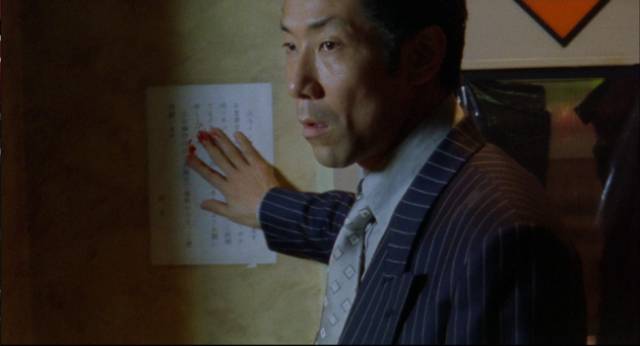
Graveyard of Honor (Takashi Miike, 2002)
Those movies of the ’70s inspired many filmmakers who followed Fukasaku, not least Takashi Miike, whose own Graveyard of Honor (2002) is simultaneously homage and a reworking of the story. While the original is rooted in reality, drawing on personal and national history, the later film (whose Japanese title is more accurately translated as New Graveyard of Honor) is set during a financial crisis in the early ’90s and takes on more of a mythic tone, in keeping with Miike’s other works in the genre like the Black Society Trilogy (1995-99), the Dead or Alive trilogy (1999-2002) and Ichi the Killer (2001). Miike offers no backstory to provide even a tentative explanation for his protagonist, renamed Rikuo Ishimatsu (Gorô Kishitani), instead framing the story with the final moments of his life, the body of the film flashing back from the moment just before he jumps, eventually returning to the top of the tower as he leaps, a blanket billowing around him like Superman’s cape – but instead of taking flight, he crashes to earth in an explosion of blood.
In between, Ishimatsu comes to seem like a demonic force which has been activated by chance – we first meet him as a restaurant worker who steps in to end an attempted hit on a mob boss; devoid of affect, he moves quickly and lethally with no more apparent emotion than if he were just clearing tables. The grateful boss, invites him into the family and he takes to the new life with as little show of emotion as he displayed in the restaurant. His cold demeanour is not just inhuman – he seems alien, killing, raping, becoming addicted to heroin as if seeking some stimulant which might finally make him feel something. Eventually, he destroys his patron, his “girlfriend” (a woman he has taken full possession of and addicted to drugs), the tenuous balance maintained by various feuding crime families – and in the end, he climbs that prison tower and takes that fatalistic leap.
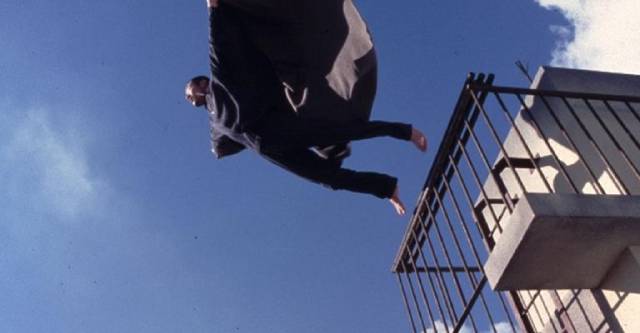
In some ways, Kishitani’s performance is more chilling than Watari’s, but it’s less real, a construct embodying Miike’s nihilistic view of Japanese society. Unexpectedly, the 2002 version is stylistically more conventional, with a less frenetic use of camera and editing. Fukasaku’s movie is raw, all jagged edges, as if grabbed on the fly as events happen, while Miike’s seems to connect with other movies rather than the actual world, commenting on genre rather than actual social conditions and lived experience. Presented together in Arrow’s two-disk set, they reflect changes in both Japanese society and Japanese cinema, and despite Miike’s (well-earned) reputation for going to extremes, Fukasaku’s film is harsher and more disturbing because it’s so well-grounded in a particular historic moment.
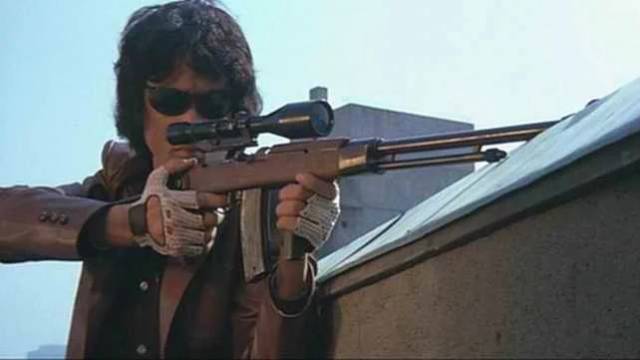
The Game Trilogy (Toru Murakawa, 1978-79)
By 1978, Fukasaku had left yakuza behind and taken a new direction, beginning with Shogun’s Samurai and Message From Space (both 1978), eventually blending genres with movies like Samurai Reincarnation (1981) and Legend of the Eight Samurai (1983), which combined jidaigeki with supernatural horror, and even trying his hand at a big-budget international production with Virus (1980), but back at his old studio Toei, his influence on a new generation could be seen in the work of someone like Toru Murakawa, who made a trilogy of movies about a hitman in quick succession in 1978 and 1979 on very low budgets and extremely short shooting schedules. Released by Arrow in a two-disk set as Game Trilogy, The Most Dangerous Game, The Killing Game (both 1978) and The Execution Game (1979) belie their production constraints through dynamic camerawork and editing and some very impressively staged action sequences. While they share some troubling elements with the yakuza genre (particularly a thick strain of misogyny), they almost seem like a model for the big-budget action movies we see today – it’s not a stretch to see the seeds of John Wick here.
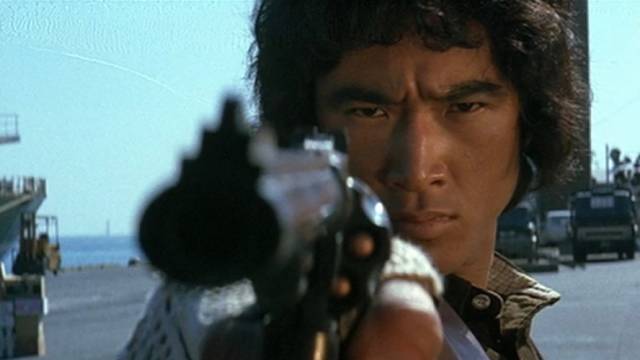
Like the Wick movies, this trilogy takes place in a world where no one is a civilian, everyone is involved in an underworld rife with betrayals and violence, and at the centre there’s a cool, highly skilled killer. In this case it’s Shouhei Narumi (Yûsaku Matsuda), who combines disdain for everyone he meets with a casual attitude towards both meting out and receiving violence. Almost every job he takes involves being lied to and betrayed by his employers, and he’s as likely to end up killing them as he is his official target. Along the way, he’s involved in impressively sustained action sequences in which, like John Wick, he has to make his way through buildings full of armed opponents whom he dispatches with ruthless efficiency while ignoring the wounds he himself sustains. These sequences are even more impressive given that each movie was shot in just two weeks – Murakawa never stops moving the camera and uses long, complex choreographed takes to give the action a breathless pace.
While these three movies may not have any depth or make any comment on the society which produced them, they’re exemplary pieces of pure exploitation, visceral displays of nihilistic energy showcasing Matsuda’s undeniable screen presence which, like Keanu Reeves as John Wick, relies on a particular kind of barely expressive cool to dominate everyone around him.
Comments